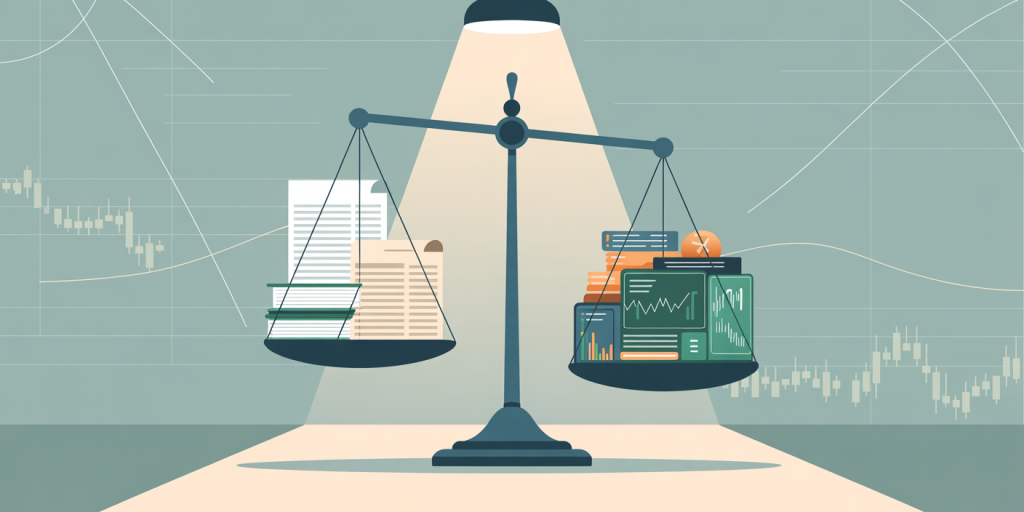How to Invest When the Market Is Down
Periods of market downturns are often met with fear and uncertainty by investors. However, these times also offer significant opportunities for those who know how to approach investing with a strategic mindset. Market declines can create valuable entry points to buy quality assets at discounted prices, setting the foundation for potential long-term growth. This article explores actionable strategies and practical guidance on how to invest effectively when the market is down, supported by real-world examples and data-driven insights.
Understanding Market Downturns: Context and Opportunity
Market downturns—characterized by sustained declines in stock prices, often exceeding 10% or more—are natural components of the economic cycle. According to historical data from S&P Dow Jones Indices, the average bear market (a decline of 20% or more) lasts approximately 1.4 years, but often followed by robust recoveries. For example, during the 2008 financial crisis, the S&P 500 dropped by approximately 57%, but by 2013, the index had recovered nearly 100% from its lows.
Investors typically face psychological barriers during downturns, such as the fear of further losses or the temptation to liquidate portfolios. However, the groundwork for significant wealth accumulation is often laid during these periods. Investment legend Warren Buffett famously advises, “Be fearful when others are greedy and greedy when others are fearful,” emphasizing that contrarian approaches during downturns can yield outsized returns.
Maintain a Long-Term Perspective and Avoid Panic Selling
The first crucial step when the market is down is to maintain a disciplined long-term perspective. Panic selling during declines may lead to crystallizing losses and missing subsequent rebounds. According to a study by DALBAR, Inc., investors who attempted to time the market often underperformed the broader market due to reactionary selling and buying.
Consider the case of the COVID-19 market crash in March 2020. Investors who sold their holdings at the market bottom experienced losses, while those who maintained their positions or strategically added to their investments benefited from an accelerated market recovery. The S&P 500 surged around 75% from the March 2020 lows to the end of 2021.
Maintaining patience allows investors to capitalize on the eventual market recovery. Instead of reacting emotionally, reviewing your financial goals and risk tolerance is critical to staying the course. Diversified portfolios tend to weather downturns more effectively, reducing volatility and drawdowns.
Utilize Dollar-Cost Averaging to Build Positions Strategically
Dollar-cost averaging (DCA) is a practical investment strategy during market declines. It involves investing a fixed amount of money at regular intervals regardless of market conditions. This approach smooths out market volatility by purchasing more shares when prices are low and fewer shares when prices are high, effectively lowering the average cost per share.
An example of DCA in action can be seen with investors who regularly contributed to retirement accounts such as 401(k)s or IRAs throughout the 2008-2009 financial crisis. Those who consistently invested were able to accumulate shares at lower prices, resulting in substantial gains when the market rebounded. A Vanguard study showed that investors who maintained consistent contributions through downturns had a higher likelihood of reaching their financial goals.
The following table illustrates how dollar-cost averaging mitigates the risks of lump-sum investing during volatile markets:
| Investment Timing | Lump-Sum Investment Return | Dollar-Cost Averaging Return |
|---|---|---|
| Invest at Market Peak | -25% (initial loss) | Average loss minimized |
| Invest Through 6 Months | -10% to +5% (fluctuating) | Smoothed investment price |
| Invest at Market Low | +20% to +30% (recovery) | Capitalized on LOW prices |
By committing to regular investments during downturns, investors position themselves to benefit from market recoveries while managing timing risks.

Focus on Quality and Diversification
During market declines, high-quality companies and well-diversified portfolios tend to outperform speculative or high-risk assets. High-quality companies typically have strong balance sheets, consistent earnings, and solid competitive advantages that enable them to endure economic stress.

During the dot-com bubble burst in the early 2000s, companies with durable business models such as Procter & Gamble and Johnson & Johnson maintained better valuation stability compared to high-flying tech stocks that lost significant value. Similarly, during the pandemic-related downturn, sectors like technology and healthcare rebounded faster due to innovation and sustained demand.
Diversification across asset classes (stocks, bonds, real estate, and cash equivalents) reduces overall portfolio risk. Bonds often act as a hedge during equity market declines, providing income and lowering volatility. For instance, during the 2008 crisis, the Barclays U.S. Aggregate Bond Index returned approximately 5%, cushioning investors’ overall losses.
| Asset Class | 2008 Market Performance | 2020 Market Performance |
|---|---|---|
| S&P 500 (Stocks) | -37% | -34% |
| U.S. Aggregate Bonds | +5% | +7% |
| Real Estate | -20% | -15% |
Incorporating both growth and defensive assets allows investors to maintain capital while positioning for growth once the market stabilizes.
Take Advantage of Tax Strategies and Loss Harvesting
Market downturns can also create opportunities for tax optimization, particularly through tax-loss harvesting. This strategy involves selling securities that have declined in value to realize capital losses, which can offset capital gains or reduce taxable income.
For example, investors who sold losing positions during the 2018 market correction could offset gains from other investments or reduce their taxable income. The IRS allows harvested losses to offset up to $3,000 of ordinary income per year, with excess losses carried forward indefinitely.
Tax-loss harvesting not only reduces tax liabilities but also frees up capital that can be reinvested into more promising assets. Careful implementation can improve after-tax returns significantly without abandoning investment goals. According to a report by Morningstar, tax-efficient investing strategies can increase net returns by up to 1% annually over time.
Monitor Market Indicators and Remain Informed
Staying informed about macroeconomic indicators, market trends, and sector-specific developments is vital when navigating downturns. Economic indicators such as GDP growth, unemployment rates, inflation, and corporate earnings reports provide context on market conditions and recovery potential.
During the 2008 crisis, investors who monitored key indicators such as the Federal Reserve’s monetary policies or government stimulus programs were better positioned to anticipate market rebounds. Similarly, in 2020, understanding the rapid deployment of fiscal stimulus helped investors avoid panic selling and identify sectors primed for recovery.
Use reputable sources such as the U.S. Bureau of Economic Analysis, Federal Reserve announcements, and major financial news platforms to track important data. However, avoid being overwhelmed by short-term noise and maintain focus on long-term drivers.
Preparing for the Future: Investing in a Post-Downturn Environment
Looking ahead, how investors adapt during downturns can determine their financial security and wealth accumulation. Market downturns historically reset valuations and create new opportunities for innovation-led growth. For instance, the technology boom after the 2000 dot-com crash reshaped portfolios worldwide.
Anticipating future market cycles, many experts recommend maintaining flexible investment plans that incorporate a mix of value and growth stocks, dividend-paying equities, and bonds. Environmental, Social, and Governance (ESG) investing is also gaining traction, aligning values with financial goals and potentially reducing risk exposure.
Automation and AI-driven investment tools are increasingly popular for monitoring market conditions and executing tactical shifts. Robo-advisors utilize algorithms based on investor risk profiles to rebalance portfolios efficiently during volatile times.
Investors who embrace education, leverage diversified assets, and adapt to evolving market conditions are more likely to thrive regardless of economic headwinds. The key takeaway remains: downturns are not just periods of risk but also potential springboards for resilient, long-term investing success.
Market volatility can be intimidating, but a balanced approach incorporating patience, strategic investment methods, and continuous learning offers a practical path forward. Understanding historical patterns, applying tried-and-tested strategies such as dollar-cost averaging and tax-loss harvesting, and focusing on quality and diversification will empower investors to navigate downturns successfully. Future market cycles will inevitably bring challenges, but with disciplined preparation, these can also be transformed into enduring opportunities.

